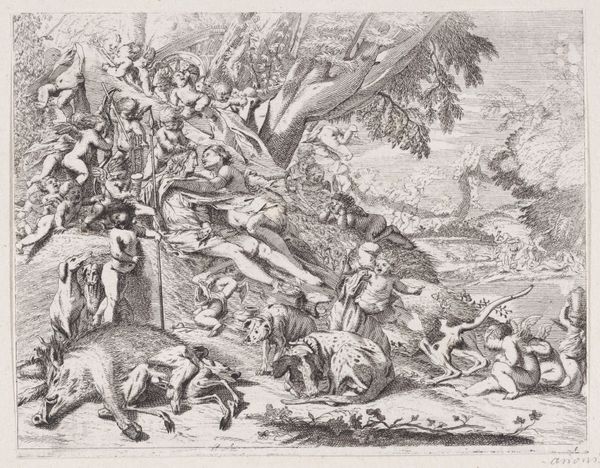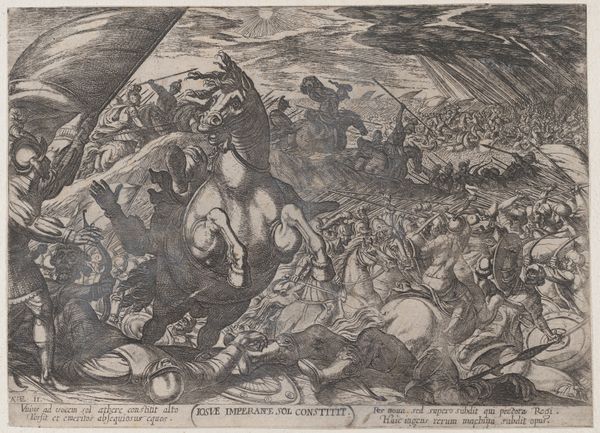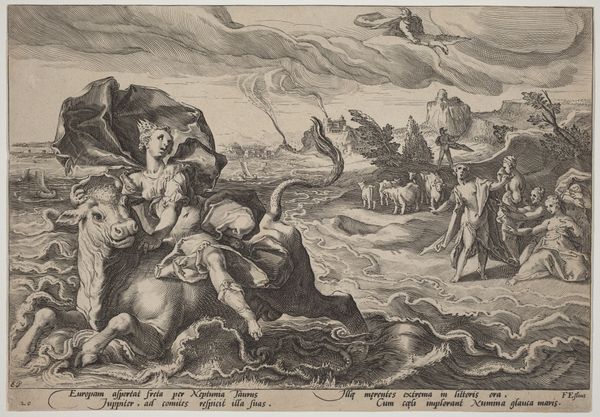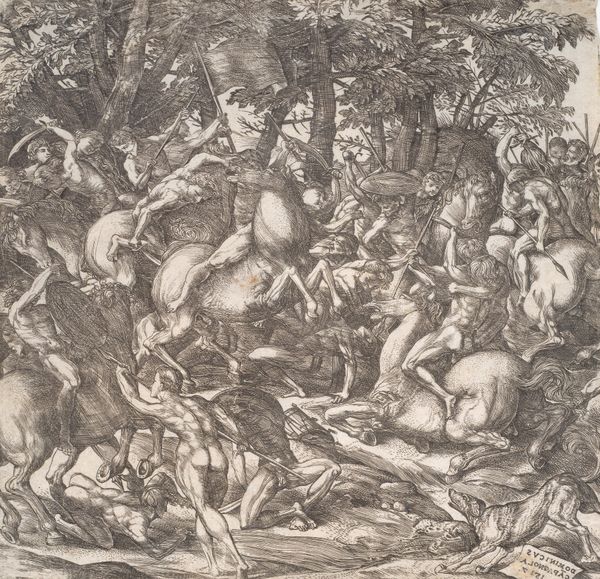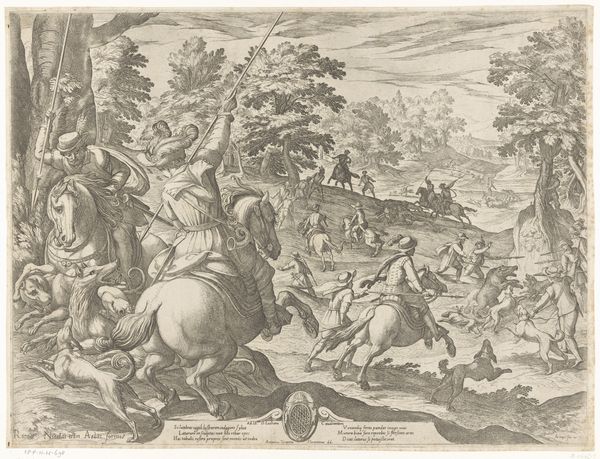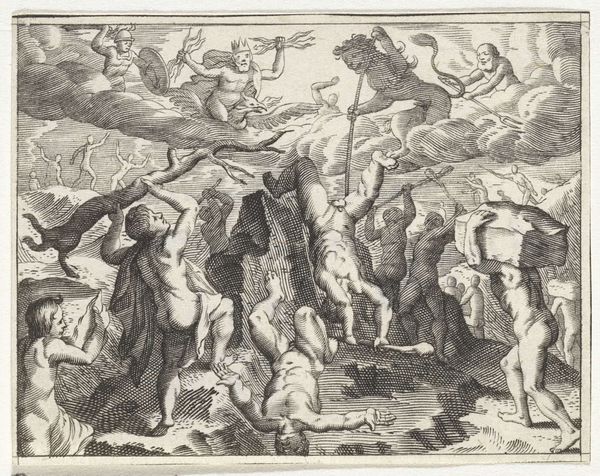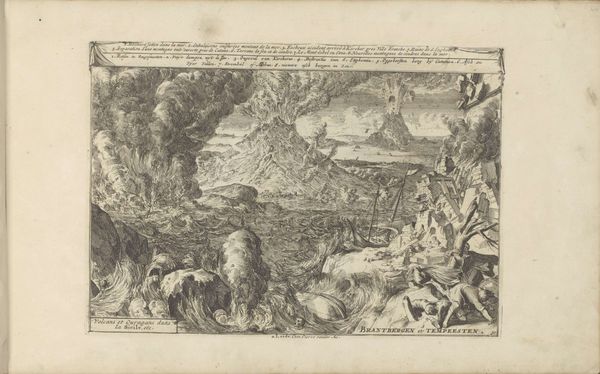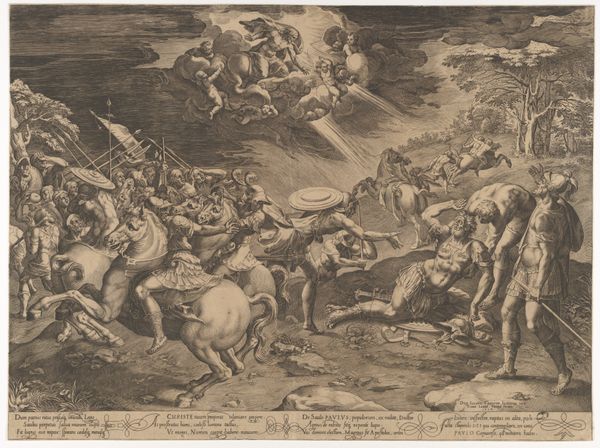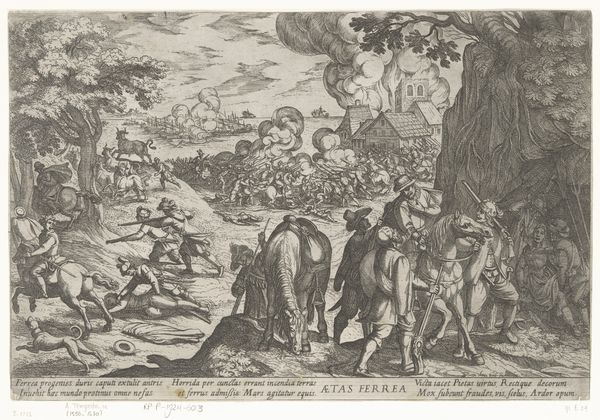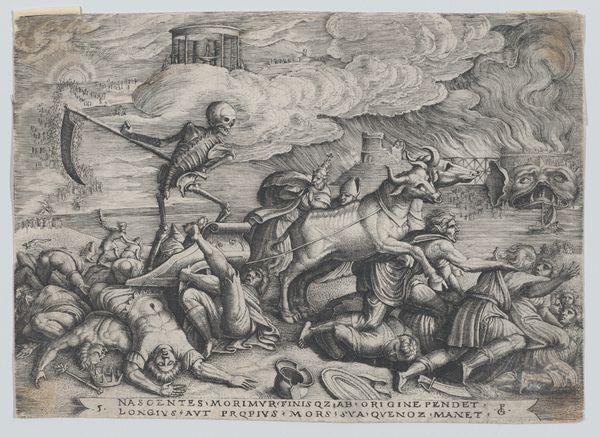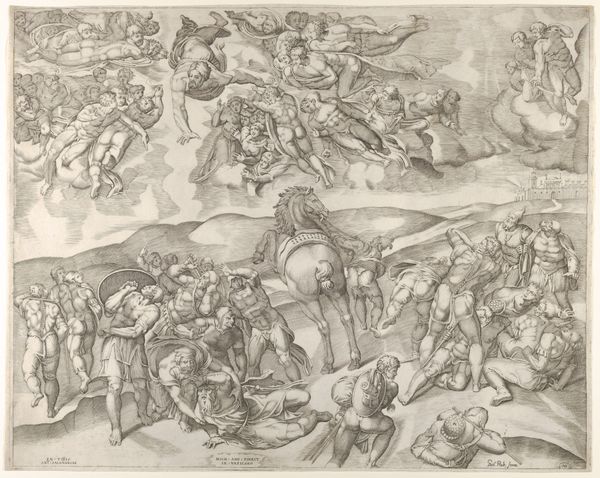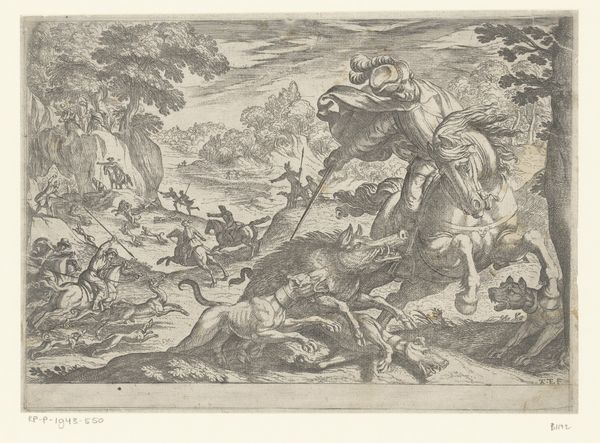
Venus and Adonis, surrounded by many putti, reclining after the hunt, with a dead boar in the lower right 1630 - 1650
0:00
0:00
drawing, print, engraving
#
drawing
#
allegory
#
baroque
# print
#
landscape
#
history-painting
#
italian-renaissance
#
engraving
Dimensions: sheet: 14 5/16 x 17 15/16 in. (36.4 x 45.6 cm)
Copyright: Public Domain
Curator: Look at this striking engraving; Pietro Testa's "Venus and Adonis, surrounded by many putti, reclining after the hunt, with a dead boar in the lower right", likely created between 1630 and 1650. What catches your eye first? Editor: The sheer busyness! A cascade of cherubic figures surrounding Venus and Adonis. There’s a sense of overwhelming… sweetness, I suppose. And a kind of classical Baroque theatricality. Curator: Indeed! The composition presents a layered narrative. We see Venus and Adonis post-hunt, love blossoming, death, and the symbolism layered within this mythology. It also shows us about power and vulnerability in the story's gendered context. Venus, a goddess, reduced to begging Adonis to be safe... Editor: Ah, yes. The iconography here is thick, certainly, that central embrace signifying both love and imminent loss. Those countless putti… are they simply witnesses, or something more active? Curator: They act as agents, almost like a chorus, their presence amplifies the drama and inevitability. The dead boar at the bottom, that foreshadowing is devastating when considering Venus’ desperation. She has agency, but cannot fight destiny in this interpretation. Editor: That lifeless boar. Quite prominent, it really serves as an immediate reminder of Adonis’s future. The sleeping dogs are like unwitting accomplices in this scene too. What about the setting? I am also intrigued to know why is the composition crammed, filled, almost to bursting, as if the gods have been pushed out of their own natural domains and are in our spaces? Curator: Testa uses a crowded scene strategically. Landscape during the Baroque served as backdrop to human and divine action and allowed a broader perspective on gender power, mythology and philosophical considerations, so everything has meaning. That profusion speaks to nature’s indifference but also her generosity; everything is at play: violence, death, love, beauty. Editor: This piece really reminds us that art, regardless of time, reflects back at the human condition. Thank you for this reading!
Comments
No comments
Be the first to comment and join the conversation on the ultimate creative platform.
